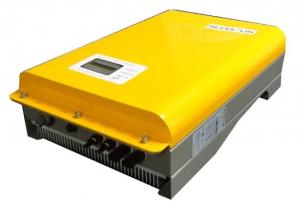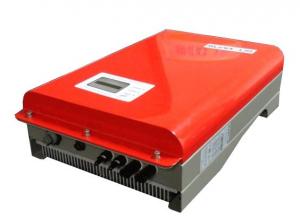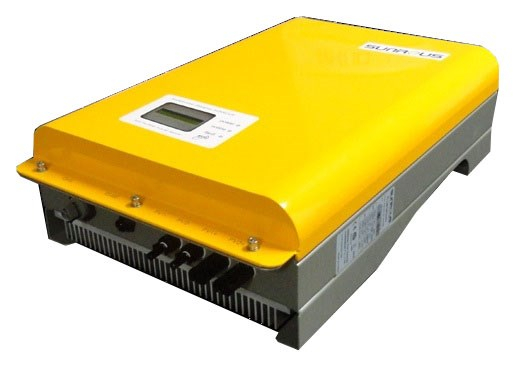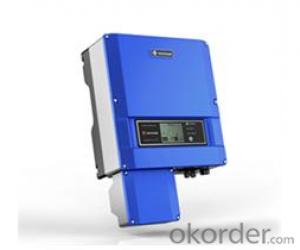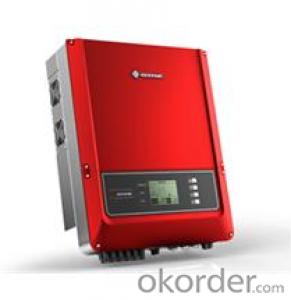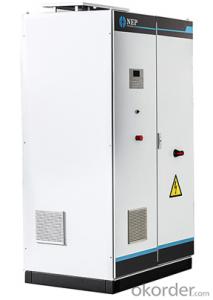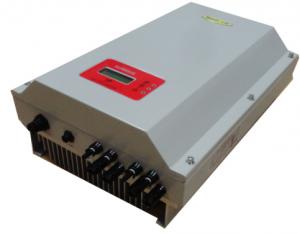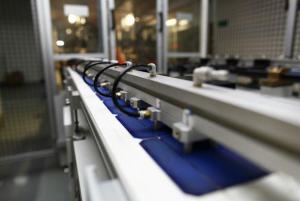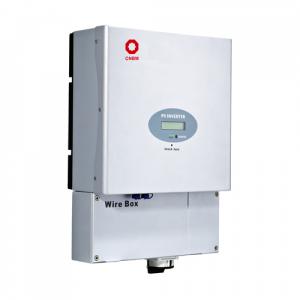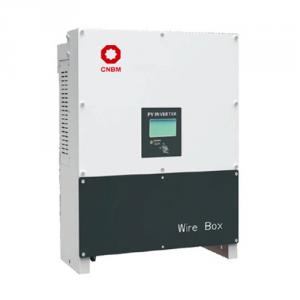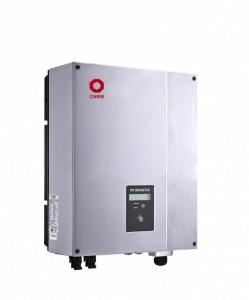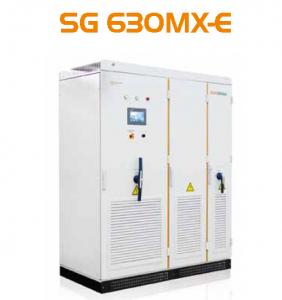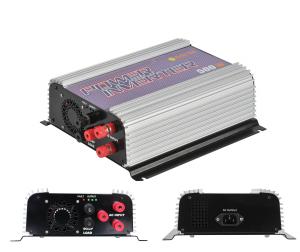Eastman Solar Inverter - US Standard PV Grid-Tied Inverter Solar Inverter
- Loading Port:
- Shanghai
- Payment Terms:
- TT or LC
- Min Order Qty:
- 10 cm
- Supply Capability:
- 800 cm/month
OKorder Service Pledge
OKorder Financial Service
You Might Also Like
CNBM International is highly recognized by its business partners and clients all over the world and has obtained rapid development under the spirit of win-win. We will carry on the mutual beneficial, innovative and revolutionary trading structure as we did before, create value for our employees, share holders and clients and benefit the whole society in our future development.
US Standard PV Grid-Tied Inverter Solar Inverter
5 years warranty
·Sealing stainless steel shell, suitable for indoor or outdoor installation
·Using industrial frequency transformer in isolation,ensure system safety and reliability
·The highest efficiency achieves 94. 8% have satisfactory cosmetic
·Adopt connectors type cable connection, easy operation and installation
·With multiple independent MPPT channel function to ensure maximum photovoltaic system
capacity
·Has the active and passive double prevent island function
·Working temperature range - 25 to 50 ℃
LF series 0.6kw — 1.5kw
Features: Single stage inverter is the main characteristic of this product , in which power grade period compared with other topological structure has higher conversion effciency and reliability

LF series 2.0kw — 2.8kw
Features: Double channel input, and their respective independent of the MPPT function, make photovoltaic array installation is more fexible.

Solar Inverter Datasheet
| GT0.6-ZX-01/LF | GT1.0-ZX-01/LF | GT1.5-ZX-01/LF | |
|---|---|---|---|
| Input(DC) | |||
| Max.DC Power | 700W | 1200W | 1750W |
| Rated input voltage | 280V | 280V | 280V |
| PV Voltage range, MPP | 150V ~ 400V | 150V ~ 400V | 150V ~ 400V |
| Max.DC Voltage | 4.5A | 6.0A | 10.0A |
| Number of MPP trackers | 1 | 1 | 1 |
| Number of strings (parallel) | 1 | 1 | 1 |
| Output(AC) | |||
| Nominal AC /max AC power | 600W/660W | 1000W / 1100W | 1500W / 1650W |
| Max.output current | 3.0A | 5.0A | 7.0A |
| Nominal AC Voltage | 120V/220/ 230/240V | 120V/220/ 230/240V | 120V/220/ 230/240V |
| AC range | -15+10%(Vrms) adjustable | -15+10%(Vrms) adjustable | -15+10%(Vrms) adjustable |
| AC grid frequency/range | 50/60/±0.5Hz adjustable | 50/60/±0.5Hz adjustable | 50/60/±0.5Hz adjustable |
| Power factor | >0.99 | >0.99 | >0.99 |
| THD | <4% | <4% | <4% |
| AC connection | Single-phase | Single-phase | Single-phase |
| effciency | |||
| Max.effciency/Euro-ETA | >93.0% / >92.0% | >93.5% / >92.5% | >94.5% / >93.0% |
| Protection devices | √ | √ | √ |
| DC reverse polarity protection | √ | √ | √ |
| AC short-circuit protection | √ | √ | √ |
| Ground fault monitoring | √ | √ | √ |
| Grid monitoring | √ | √ | √ |
| Output Transient Voltage Suppression | √ | √ | √ |
| General data | |||
| Dimensions (W/ H / D) in mm | 330 / 330 / 146 mm | 330 / 430 / 146 mm | 330 / 430 / 146 mm |
| Weight (Kg) | 19.5 | 22.5 | 27 |
| Operating temperature range | -25 ~ +50 | -25 ~ +50 | -25 ~ +50 |
| Storage temperature range | -40 ~ +70 | -40 ~ +70 | -40 ~ +70 |
| Ambient humidity | 0 ~ 95% | 0 ~ 95% | 0 ~ 95% |
| Consumption (night) | <0.5W | <0.5W | <0.5W |
| Topology | HF-transformer | HF-transformer | HF-transformer |
| Cooling concept | Convection | Convection | Convection |
| Enclosure type | IP65 | IP65 | IP65 |
| Features | |||
| DC connection: PV special connector | √ | √ | √ |
| AC connection: connector | √ | √ | √ |
| LCD display & Backlit | √ | √ | √ |
| LED display | √ | √ | √ |
| Interfaces: RS485 | √ | √ | √ |
| Warranty: 10years | √ | √ | √ |
| Certifcates & approvals | UL1741/ IEEE1547/ VDE0126-1-1/ AS4777/ DK5940 | UL1741/ IEEE1547/ VDE0126-1-1/ AS4777/ DK5940 | UL1741/ IEEE1547/ VDE0126-1-1/ AS4777/ DK5940 |
| Electromagnetic compatibility | IEC62103/ EN50178/ EN61000-6-1/2/3 | IEC62103/ EN50178/ EN61000-6-1/2/3 | IEC62103/ EN50178/ EN61000-6-1/2/3 |
- Q: Can a solar inverter be used with solar-powered recreational vehicles (RVs)?
- Yes, a solar inverter can be used with solar-powered recreational vehicles (RVs). A solar inverter is an essential component of an RV solar power system as it converts the direct current (DC) generated by the solar panels into alternating current (AC) that can be used to power various appliances and devices in the RV. It helps optimize the energy generated by the solar panels and ensures a reliable power supply while on the move.
- Q: How does a solar inverter handle grid frequency deviations?
- A solar inverter handles grid frequency deviations by continuously monitoring the frequency of the electrical grid. If the grid frequency deviates from the standard frequency, the inverter adjusts its output frequency accordingly to maintain synchronization with the grid. This ensures that the solar power generated by the inverter is in phase with the grid frequency, allowing seamless integration of the solar power into the grid system.
- Q: Can a solar inverter be used in a three-phase power system?
- Yes, a solar inverter can be used in a three-phase power system. In fact, three-phase solar inverters are commonly used in commercial and industrial applications where the power demand is higher. These inverters are designed to convert the direct current (DC) generated by solar panels into alternating current (AC) that is compatible with a three-phase power system.
- Q: What is the role of a solar inverter in preventing system failures?
- The role of a solar inverter in preventing system failures is to convert the direct current (DC) produced by solar panels into alternating current (AC) that can be used to power electrical devices. By continuously monitoring the performance of the solar system and ensuring the optimal conversion of power, the inverter helps to prevent issues such as voltage fluctuations, overloading, and short circuits. It also provides vital protection by promptly detecting and responding to any faults or abnormalities in the system, thereby minimizing the risk of system failures and maximizing the overall efficiency and reliability of the solar power generation.
- Q: What is the maximum number of AC outputs in a solar inverter?
- The maximum number of AC outputs in a solar inverter varies depending on the model and design of the inverter. Some solar inverters may have a single AC output, while others can have multiple AC outputs, ranging from two to four or even more.
- Q: What is the role of a power monitoring feature in a solar inverter?
- The role of a power monitoring feature in a solar inverter is to track and measure the amount of power generated by the solar panels. It provides real-time data on the energy production, allowing users to monitor the system's performance, identify any issues or inefficiencies, and optimize the overall energy output. This feature is crucial for ensuring the effective and efficient operation of a solar power system.
- Q: Can a solar inverter be used with a solar-powered electric gate system?
- Yes, a solar inverter can be used with a solar-powered electric gate system. The solar inverter is responsible for converting the direct current (DC) produced by the solar panels into alternating current (AC) that can be used to power the electric gate system. This allows for efficient and reliable operation of the gate system using solar energy.
- Q: What is the role of a power limiter in a solar inverter?
- The role of a power limiter in a solar inverter is to regulate and limit the amount of power that is fed into the electrical grid. It helps ensure that the solar system does not exceed the maximum power capacity of the grid, preventing any potential damage or overloading. The power limiter also helps maintain a stable and balanced power output, optimizing the efficiency and performance of the solar inverter.
- Q: What is the role of an MPPT (Maximum Power Point Tracking) inverter?
- The role of an MPPT (Maximum Power Point Tracking) inverter is to optimize the conversion of solar energy into usable electricity. It constantly tracks and adjusts the operating point of the solar panels to ensure that they are always operating at their maximum power point, which maximizes the efficiency and output of the solar system.
- Q: Are there any maintenance requirements for a solar inverter?
- Yes, solar inverters do have maintenance requirements. Regular cleaning of the solar inverter and its components is necessary to remove dust and debris. Additionally, checking for loose connections, inspecting for any physical damage, and ensuring proper ventilation are important maintenance tasks. It is also recommended to monitor the inverter's performance regularly and promptly address any issues or errors that may arise.
Send your message to us
Eastman Solar Inverter - US Standard PV Grid-Tied Inverter Solar Inverter
- Loading Port:
- Shanghai
- Payment Terms:
- TT or LC
- Min Order Qty:
- 10 cm
- Supply Capability:
- 800 cm/month
OKorder Service Pledge
OKorder Financial Service
Similar products
Hot products
Hot Searches
Related keywords
